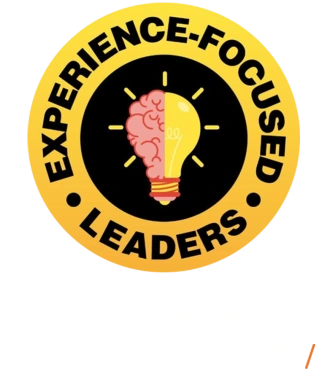Listen to the Podcast Episode on Your Favorite Platform

.svg.png)

How Storytelling Can Transform Your Business
.png)
When I started studying these frameworks, everything from the hero's journey to Blake Snyder's “15 beats to the story”, it occurred to me that what Hollywood was using was the ideal template for a customer journey or a brand journey that we're all on. (Park Howell)
(00:01-07:49)
Park Howell shares his journey from running a traditional ad agency to becoming a storytelling expert, highlighting how the digital age shifted the power from brands to the audience.
He discusses how Hollywood's storytelling techniques, like the hero's journey, can be adapted to create compelling brand narratives that resonate with customers.
Park Howell emphasizes that the key to effective storytelling is understanding that the customer, not the brand, is the true hero of the story. He explains how focusing on the outcomes that matter to your audience, rather than just promoting a product, can lead to greater success and engagement.
.png)
The Secret to Winning Customers: It’s Not About Being Number One
.png)
Jeff Bezos of Amazon said it beautifully. He said, “A brand is what people say about you when you're not in the room.” I’ve co-opted that a little and believe that a brand is really the stories people tell about you when you're not in the room. (Park Howell)
(07:49-13:52)
Park Howell shares an insightful story about a CEO who believed that simply being the leader in his industry was enough to attract customers. Park Howell challenged this mindset, explaining that customers don’t just care about your position in the market—they care about what’s in it for them.
The discussion highlights how the most effective stories are those that resonate with the audience, not just praise the brand. The speakers explore the importance of making storytelling simple and relatable so that customers can easily share and retell the story. Park Howell introduces the "And, But, Therefore" (ABT) framework, a powerful tool he learned from Dr. Randy Olson, which simplifies complex messaging into a compelling narrative structure that speaks to the emotional side of the audience.
.png)

The Real Challenge for B2B Marketers: Why Content Isn't Delivering the Results You Need
(13:52-20:48)
The speakers discuss how marketers, often working with small teams and limited resources, are expected to generate leads, support sales, and drive customer success—all without the proper tools or recognition.
Alex Shevelenko highlights that many B2B marketers are stuck in a frustrating cycle, unable to create compelling content quickly enough to truly engage their audience. Park Howell guides the conversation towards understanding the root of this issue, emphasizing the importance of identifying the core problem before jumping to solutions. He introduces the idea that while marketers are often focused on the outcomes (like more leads or higher win rates), they first need to address the underlying problems preventing these results.
Through their discussion, they emphasize that the right tools, like the RELAYTO Content Experience platform, can transform content from just another deliverable into a powerful, always-on salesperson that engages customers around the clock.
.png)
Crafting a Winning Story: How to Tailor Your Message for Maximum Impact
.png)
Your ABT is always a singular narrative. It speaks to one particular audience. You create different ABTs for different audiences and different problems. What do they want relative to your offering, and why is that important to them? (Park Howell)
(20:48-27:45)
Park Howell emphasizes the importance of keeping the message simple and focused, addressing just one problem at a time, rather than overwhelming the audience with multiple issues.
He explains that when marketers jump straight to describing their product or service, they risk alienating their audience by not addressing their specific needs or problems. Instead, Park Howell suggests starting with a positive outcome that the customer desires, followed by the problem that’s preventing them from achieving it. This approach not only keeps the audience engaged but also builds trust by showing that the marketer truly understands their challenges.
The speakers also discuss the importance of customizing the narrative for different stakeholders within an organization. Park Howell shares an example from his experience working with Coca-Cola, where the same program had to be pitched differently to the Chief Marketing Officer, the Chief Sustainability Officer, and the HR department, each with their own set of priorities and concerns.
.png)

From Slideware to Storytelling: Mastering Audience-Centric Presentations
.png)
My overarching message is to excel through the stories you tell. However, depending on who I'm talking to, it will take on a different color. I’ve got to support it from a sales and marketing standpoint, a learning and development standpoint, an HR standpoint, and a leadership standpoint. (Park Howell)
(27:45-36:30)
Alex Shevelenko highlights the challenge many companies face when presenting to diverse buying committees, where traditional slide decks often fail to engage all stakeholders. He explains how RELAYTO's technology allows companies to create modular, personalized content for each decision-maker, ensuring that everyone finds their relevant information quickly.
Park Howell expands on this by emphasizing the importance of understanding the audience before crafting a presentation. He draws parallels between effective business storytelling and Hollywood narratives, suggesting that companies should develop a core brand narrative that resonates across all departments. By tailoring messages to different stakeholders while maintaining a unified overarching theme, businesses can keep their presentations focused and engaging.
The speakers explore the pitfalls of traditional tools like PowerPoint and PDFs, which often prioritize the creator's needs over the audience's experience. Instead, they advocate for a shift towards content that is not only informative but also engaging, relevant, and tailored to the specific needs of each audience segment.
.png)
Simplifying the Complex: How to Make Your Audience Care
(36:30-42:55)
Park Howell talks about cutting through the jargon and focusing on what truly matters—connecting with your audience on a level that makes them care about your product or offering. He argues that instead of getting bogged down in buzzwords like "audience-centric," marketers should concentrate on understanding their audience's problems and telling stories from their perspective.
Alex Shevelenko builds on this by discussing the challenge many industries face, especially when dealing with complex or valuable ideas that are often communicated poorly. He points out that while platforms like TikTok and Instagram excel at grabbing attention with simplicity, those with meaningful, game-changing content often struggle to reach beyond their niche audience.
Park Howell suggests that the key to success is "compelling clarity"—the ability to distill a complex message into a simple, engaging narrative that resonates with the audience's instinctive, decision-making processes. He suggests the "And, But, Therefore" (ABT) storytelling framework as a tool for achieving this clarity.
Alex Shevelenko then raises the issue of friction in B2B marketing, where valuable content is often locked behind cumbersome forms that turn potential leads away. He questions whether the traditional approach of gathering leads through lengthy forms is still effective in an age where people have little patience for unnecessary steps.
.png)

The Power of Storytelling: How Simplicity and Visuals Can Boost Engagement
(42:55-49:42)
By simplifying complex ideas and focusing on the problem-solution dynamic, marketers can engage their audience more effectively, whether it's through website copy, social media, or long-form content like blog posts and presentations.
Park Howell shares a success story where reordering content using the ABT framework led to a 400% increase in engagement for a LinkedIn campaign. This result wasn't due to flashy creativity but simply structuring the message in a way that connected with the audience's problem-solving mindset.
Alex Shevelenko adds to the conversation by highlighting the importance of visual storytelling, especially in an age where people are bombarded with content. He argues that powerful visuals can make a narrative more engaging and can even elevate the perceived value of the content. He compares it to the impact of a well-designed lobby in a law firm, which immediately conveys professionalism and importance.
The discussion underscores the idea that effective communication in marketing requires both clear messaging and compelling visuals.
.png)
The Intersection of Visuals and Messaging in B2B Marketing
.png)
With the ABT, you've got a built-in call to action because it makes you, as the storyteller or content creator, think about that problem solution and what's the way forward. (Park Howell)
(49:42-1:00:09)
The speakers discuss how a well-crafted story, combined with powerful visuals, can deeply resonate with an audience, triggering an emotional response and creating a lasting impression.
Alex Shevelenko emphasizes the impact of visuals on the limbic brain, explaining how the right image or video can evoke a sense of awe, much like the majestic Arizona Canyons. He argues that when visuals connect on this emotional level, they can compensate for minor shortcomings in the messaging. However, he also warns that without clarity and purpose in both visuals and messaging, the story can fall flat.
Park Howell agrees that visuals are a vital tool in storytelling but stresses that the foundation of any successful B2B marketing strategy is a clear and compelling narrative. He highlights the importance of focusing the story on the customer rather than the brand, solving a singular problem that makes the audience care. He asserts that without a strong story, even the most visually stunning and frictionless user experience won't achieve the desired impact.
.png)

Experience that Resonates Deeply With The Audience
.png)
The narrative is experience. When we hear a narrative, our brain actively participates as if the story is happening to us. So, I don't think they’re mutually exclusive. ABT is the content experience framework because you want people to experience that message, even if you have no visuals at all. (Park Howell)
(1:00:09-1:04:44)
Alex Shevelenko emphasizes the importance of data-driven, personalized experiences in B2B marketing. He explains that when a customer feels understood and is quickly guided to the solutions they care about, trust is built. This approach minimizes overwhelm and enhances clarity, aligning with the broader vision of creating a seamless user experience.
Both speakers agree on the importance of visuals in storytelling, but Alex Shevelenko adds that visuals need to go beyond aesthetics. They should resonate on a visceral level, evoking emotions like awe or pain, which can significantly enhance the effectiveness of the narrative. When visuals and narrative are combined effectively, they create a powerful, memorable experience that resonates deeply with the audience.
The speakers discuss how combining concrete, de-jargonized language with powerful visuals can create a “nuclear fission of outcomes,” reaching a broader audience and making the message more impactful.
Park Howell shares practical advice for those looking to enhance their storytelling skills, directing listeners to his podcast, "Business of Story," and his micro-training course on the ABT framework. These resources offer deeper insights into crafting compelling narratives that resonate with customers.
.png)
Snippet from the Episode
What problem does RELAYTO solve for its customers? Park Howell & Alex Shevelenko.
Check the episode's Transcript (AI-generated) HERE.
Other Episodes

Godard Abel | CEO of G2
S 01 | Ep 6 Where You Go for Software: Reach Your Peak


Dean Stocker | CEO of Alteryx
S 01 | Ep 8 Turning Your Customers Into Your Biggest Champions


Peter Fader | Co-Founder of ThetaCLV
S 01 | Ep 10 Turning Your Marketing Into Dollars

Author

Experience-focused Leaders is the #1 Multimedia Podcast! We talk to senior business & tech leaders about the experiences that move forward organizations, customers and society at large. True to form, we mix audio, video, web and eBook formats to turn these authentic conversations into personalized nuggets you'll remember & use.



.png)
